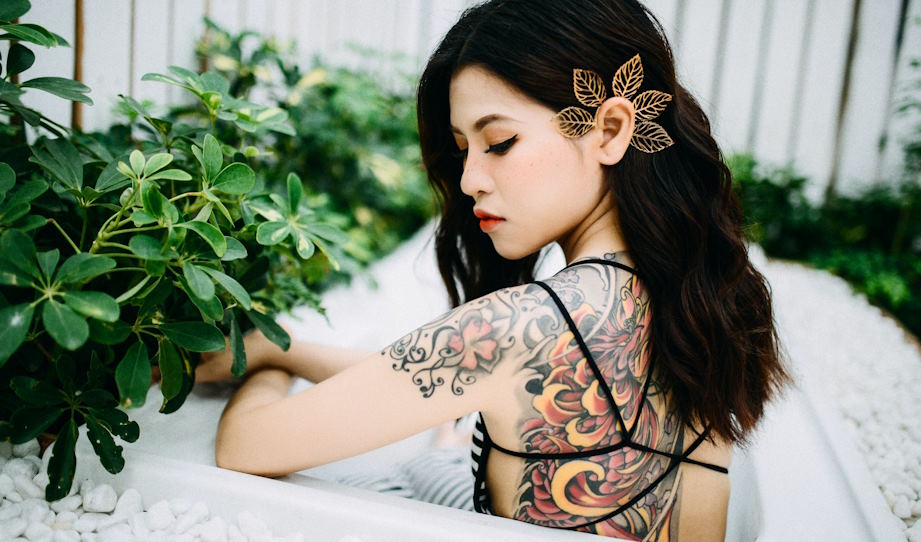Discovering the Deeper Meanings and Stories Behind Japanese Tattoo Art
- Published in Beauty Procedures
- Permalink

Japanese tattoo art, known as irezumi, has captivated people around the world with its intricate designs, bold colors, and rich symbolism. Beyond its aesthetic appeal, Japanese tattoo art carries a profound cultural and historical significance that is worth exploring. Every motif and pattern in Japanese tattoos tells a story, conveying deeper meanings and connecting to the country’s ancient traditions, mythologies, and values. Understanding the narratives and symbols behind Japanese tattoo meaning not only enhances our appreciation for its beauty but also allows us to delve into the rich tapestry of Japanese culture.
Symbolism in Japanese Tattoo Designs
Importance of symbolism in Japanese culture
Symbolism holds a significant place in Japanese culture, where every image, color, and pattern carries profound meaning. This emphasis on symbolism extends to Japanese tattoo art, making it more than just a beautiful decoration on the skin. Japanese tattoo designs are rich in symbolic elements that reflect cultural values, spiritual beliefs, and historical narratives. Understanding the symbolism behind these designs allows us to appreciate the art form on a deeper level and connect with the broader cultural context from which it emerges.
Exploration of common motifs and their meanings:
- Dragons and their association with power and wisdom
Dragons are a prominent motif in Japanese tattoo art, symbolizing power, wisdom, and good fortune. They are often depicted as majestic creatures, breathing fire and guarding treasures. In Japanese mythology, dragons are associated with the sea and the heavens, representing the balance between opposing forces. Dragon tattoos are popular among those who seek strength, protection, and guidance in their lives.
- Koi fish symbolizing perseverance and determination
Koi fish, with their vibrant colors and graceful movement, symbolize perseverance and determination in Japanese culture. These resilient creatures are often portrayed swimming upstream, representing the ability to overcome obstacles and achieve success despite adversity. Koi fish tattoos are frequently worn as a reminder to stay determined and persevere in the face of challenges.
- Cherry blossoms as a metaphor for the transient nature of life
Cherry blossoms, known as sakura in Japanese, hold profound symbolism in Japanese tattoo art. These delicate flowers represent the transient nature of life, beauty, and the concept of mono no aware – the bittersweet appreciation of the ephemeral. Cherry blossom tattoos are a reminder to cherish each moment and embrace the ever-changing nature of existence.

- Phoenixes representing rebirth and renewal
In Japanese tattoo art, phoenixes symbolize rebirth, renewal, and immortality. These mythical birds are believed to rise from the ashes, emerging stronger and more vibrant than before. The phoenix is a powerful representation of transformation and resilience, making it a popular choice for those seeking a fresh start or undergoing personal growth.
- Tigers embodying strength and courage
Tigers embody strength, courage, and protection in Japanese tattoo designs. Known for their ferocity and fearlessness, tigers are revered as symbols of power and authority. They are often depicted with bold, dynamic designs, showcasing their raw energy. Tiger tattoos are sought after by individuals seeking to channel inner strength and tap into their innate courage.
Stories and Legends Depicted in Japanese Tattoo Art
Mythological tales influencing tattoo designs
Japanese mythology is a treasure trove of captivating stories and legends that have inspired and influenced Japanese tattoo art for centuries. These tales are deeply rooted in the cultural fabric of Japan and offer a glimpse into its ancient beliefs and values. By depicting these stories in tattoo designs, individuals not only celebrate the mythical characters but also connect with the profound symbolism and lessons embedded within them.
Examples of popular stories and their representations in tattoos:
- The legend of the Yurei and its haunting depictions
Yurei, or Japanese ghosts, have a significant presence in Japanese folklore and tattoo art. These ethereal beings are often portrayed as pale, melancholic figures draped in white garments, representing spirits trapped in the world of the living. Yurei tattoos evoke a sense of mystery and evoke emotions ranging from fear to sadness, highlighting the transient nature of life and the existence of the spiritual realm.

- The tale of Momotaro and the symbolism of his journey
The story of Momotaro, the Peach Boy, is a beloved Japanese folk tale that symbolizes bravery, loyalty, and the triumph of good over evil. Momotaro, born from a peach, embarks on a journey to defeat demons and restore peace to his village. Tattoos depicting Momotaro often portray him accompanied by animal allies such as a dog, monkey, and pheasant, representing teamwork, courage, and the power of unity.
- The story of the Hō-ō and its connection to immortality
The Hō-ō, also known as the phoenix, is a mythical bird that holds great significance in Japanese folklore and tattoo art. According to legend, the Hō-ō possesses the power of immortality and is said to rise from the ashes. It symbolizes transformation, rebirth, and the eternal cycle of life. Tattoos featuring the Hō-ō are a testament to personal growth, resilience, and the pursuit of enlightenment.
These are just a few examples of the myriad stories and legends that find their way into Japanese tattoo art. Each tale carries its own symbolism and narrative, offering a deeper layer of meaning to the tattoos they inspire. By wearing these tattoos, individuals not only express their admiration for the stories but also connect with the enduring wisdom and cultural heritage that they embody.

 Founder of GretaBean, certified child development therapist, certified teacher, author, wife to Steve, and mom to our four (wonderful) children. Here you’ll find encouragment, ideas, recipes, activities for kids, organizing tips, and anything else that can make your day a little better! 🙂
Founder of GretaBean, certified child development therapist, certified teacher, author, wife to Steve, and mom to our four (wonderful) children. Here you’ll find encouragment, ideas, recipes, activities for kids, organizing tips, and anything else that can make your day a little better! 🙂